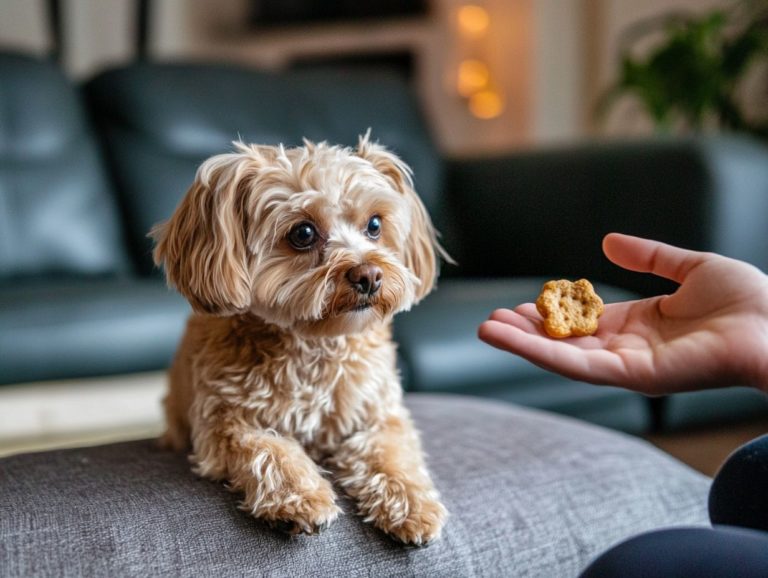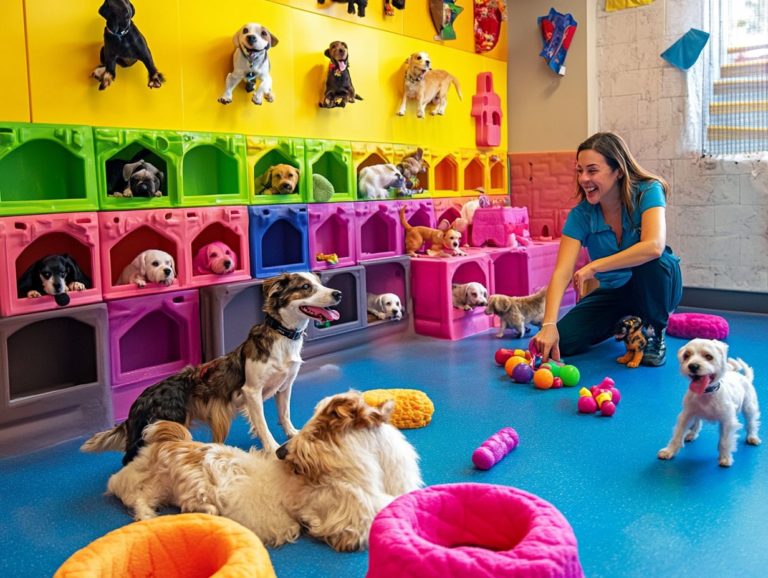How to Help My Pet Adjust to New Family Members?
Welcoming a new family member, such as a new dog, can be an exhilarating experience, yet it often presents unique challenges, particularly when pets are involved.
Grasping your furry friend s needs is essential for ensuring a seamless transition. This article delves into recognizing signs of stress and anxiety in your pet, offering insightful tips for introducing new family members, and discussing effective methods, such as crate training and dog socialization, to help your pet adjust to these changes.
From crafting a comfortable environment to tackling behavioral issues, get ready to transform your home into a peaceful haven for your pets!
Contents
- Key Takeaways:
- Understanding Your Pet’s Needs
- Introducing New Family Members to Your Pet
- Helping Your Pet Adjust to Changes
- Dealing with Behavioral Issues
- Seeking Professional Help
- Frequently Asked Questions
- What are some ways to help my pet adjust to new family members, including a new dog or senior dog?
- Should I be worried if my pet seems distant or uninterested in the new family member, especially if it s a new dog?
- Can I involve my pet in the arrival of a new family member?
- How can I prevent my pet from feeling jealous or neglected with the addition of a new family member, like a puppy or another dog?
- What should I do if my pet shows signs of aggression towards the new family member, especially if it s a new dog?
- Is there anything I should avoid when helping my pet adjust to new family members during the introduction period?
Key Takeaways:
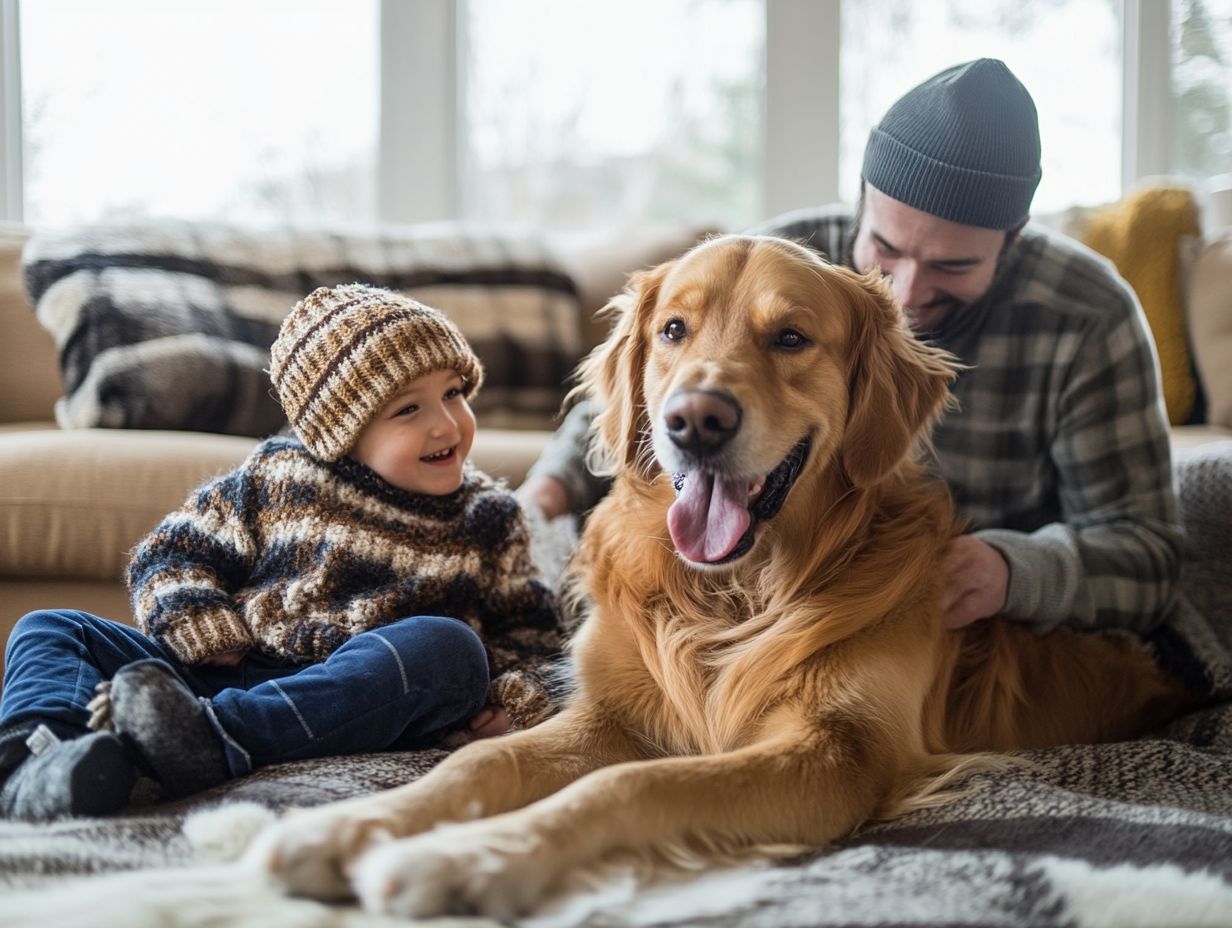
- Recognize signs of stress and anxiety in your pet when introducing new family members to address potential issues early on.
- For a successful introduction, gradually introduce your pet to the new family member, use positive reinforcement, and give your pet space and time to adjust.
- Create a comfortable environment by maintaining routines, providing familiar items, and giving your pet extra attention and love during the adjustment period.
Understanding Your Pet’s Needs
Understanding your pet’s needs is essential for helping them thrive as a beloved member of your family, if you just welcomed a new dog into your home or you’re caring for a loyal companion who’s been by your side for years.
By recognizing their unique requirements whether physical, emotional, or social you can create a nurturing environment that encourages positive behaviors and strengthens your bond.
Investing time in understanding dog behavior allows you to anticipate their needs, guiding you in choosing the right training methods and establishing a routine that benefits both you and your four-legged friend.
Recognizing Signs of Stress and Anxiety
Recognizing the signs of stress and anxiety in your pet is vital for their overall well-being and can help prevent long-term behavioral issues.
Common manifestations include excessive barking, destructive behaviors like chewing on furniture, or even withdrawal during social interactions. These symptoms may signal deeper issues, such as separation anxiety, which often arises when a dog feels isolated from their owner.
Addressing these behaviors promptly is essential. Implementing positive reinforcement training methods which means rewarding good behavior can effectively alleviate their anxiety. Simple tactics, like rewarding calm behavior and establishing a structured routine, can make a remarkable difference.
Observing your dog’s reactions in various environments also offers valuable insights into what triggers their stress, enabling you to develop better management strategies.
Introducing New Family Members to Your Pet
Introducing new family members, whether it s a new dog or a human, is an art that demands careful planning and a touch of patience to create a harmonious living environment.
During this introductory phase, it s essential to let your current dog be it an adult or a puppy slowly adjust to their new companion without feeling threatened or overlooked. By prioritizing trust from the outset, you can significantly enhance the bond between your pets and cultivate a sense of security throughout your home.
Helping Your Pet Adjust to Changes
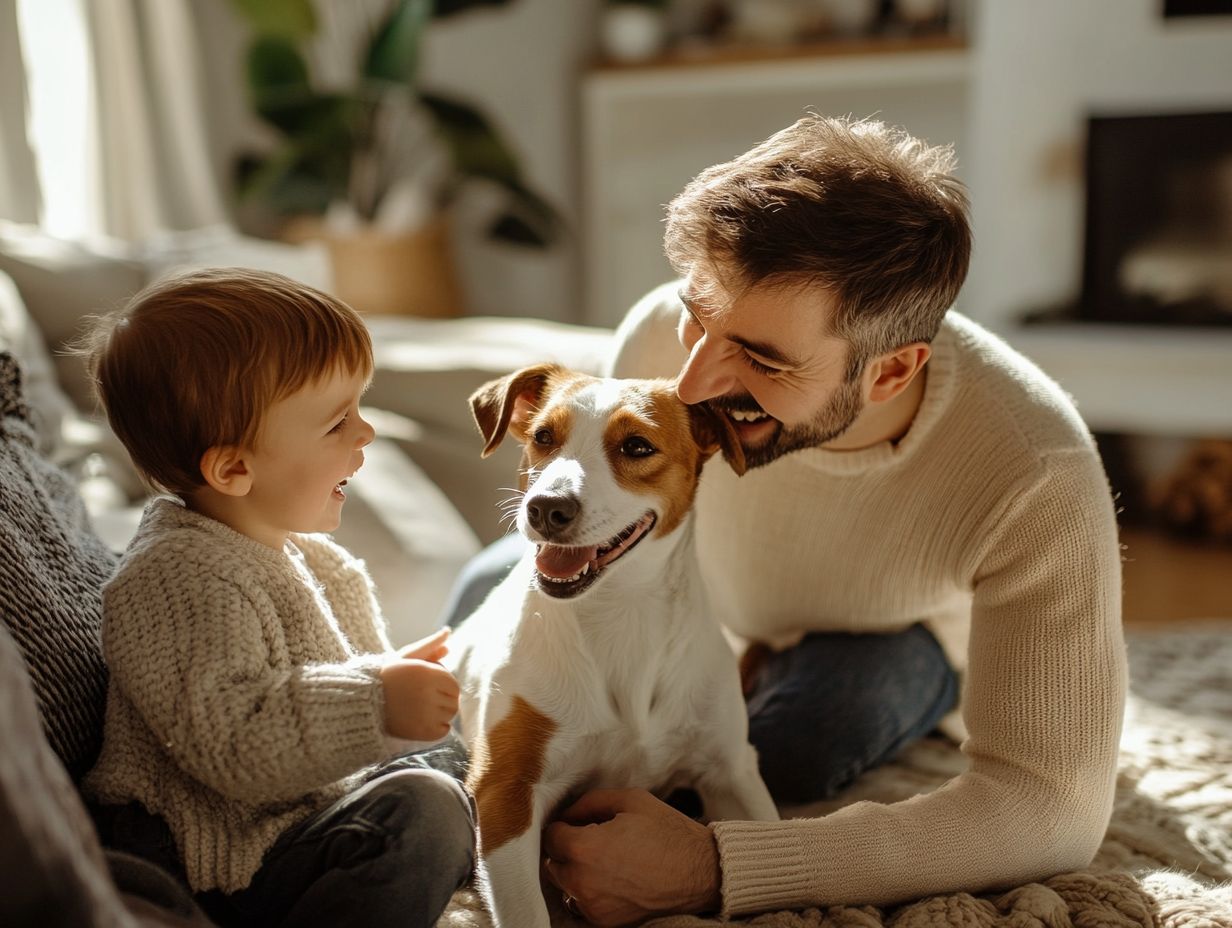
Helping your pet adjust to changes, like welcoming a new dog or family member, involves crafting a comfortable environment that supports them through this transition. For more insights, check out the best way to introduce a new pet.
It s all about ensuring they feel secure and loved during this time of adjustment.
Creating a Comfortable Environment
Creating a comfortable environment for your pet is vital for fostering a sense of security, especially during transitional periods. This means selecting the right dog supplies, like cozy bedding and engaging toys.
Also, it’s important to design safe spaces where they can retreat when feeling overwhelmed. For instance, setting up a quiet corner with their favorite blanket can create a sanctuary away from all the noise and chaos.
Paying close attention to your canine’s behavior can help you better understand their specific needs. This might involve adjusting your home layout to eliminate hazards or introducing gradual changes that encourage comfort.
Rearranging furniture to create open pathways or designated play areas can greatly enhance their living space. This promotes a more relaxing atmosphere for your furry friend.
Establishing New Routines
Establishing new routines for your pet is essential when navigating changes. This ensures they feel secure and know what to expect.
Consistent feeding times, regular exercise, and structured training schedules are key elements in promoting their well-being. When pets inhabit a predictable environment, they experience reduced anxiety and exhibit improved behavior.
This makes your training efforts significantly more effective. Incorporating patient training methods can further enrich their learning experience, as dogs thrive in a disciplined atmosphere.
For example, maintaining a scheduled exercise routine not only keeps them physically fit but also fosters positive associations between activities and rewards. This ultimately leads to a harmonious relationship with their surroundings.
Dealing with Behavioral Issues
Dealing with your pet’s behavior can be a challenge, but it’s super important! Tackling behavioral issues requires effective training techniques and a deep understanding of how to foster positive behaviors.
Common Behavioral Changes and How to Address Them
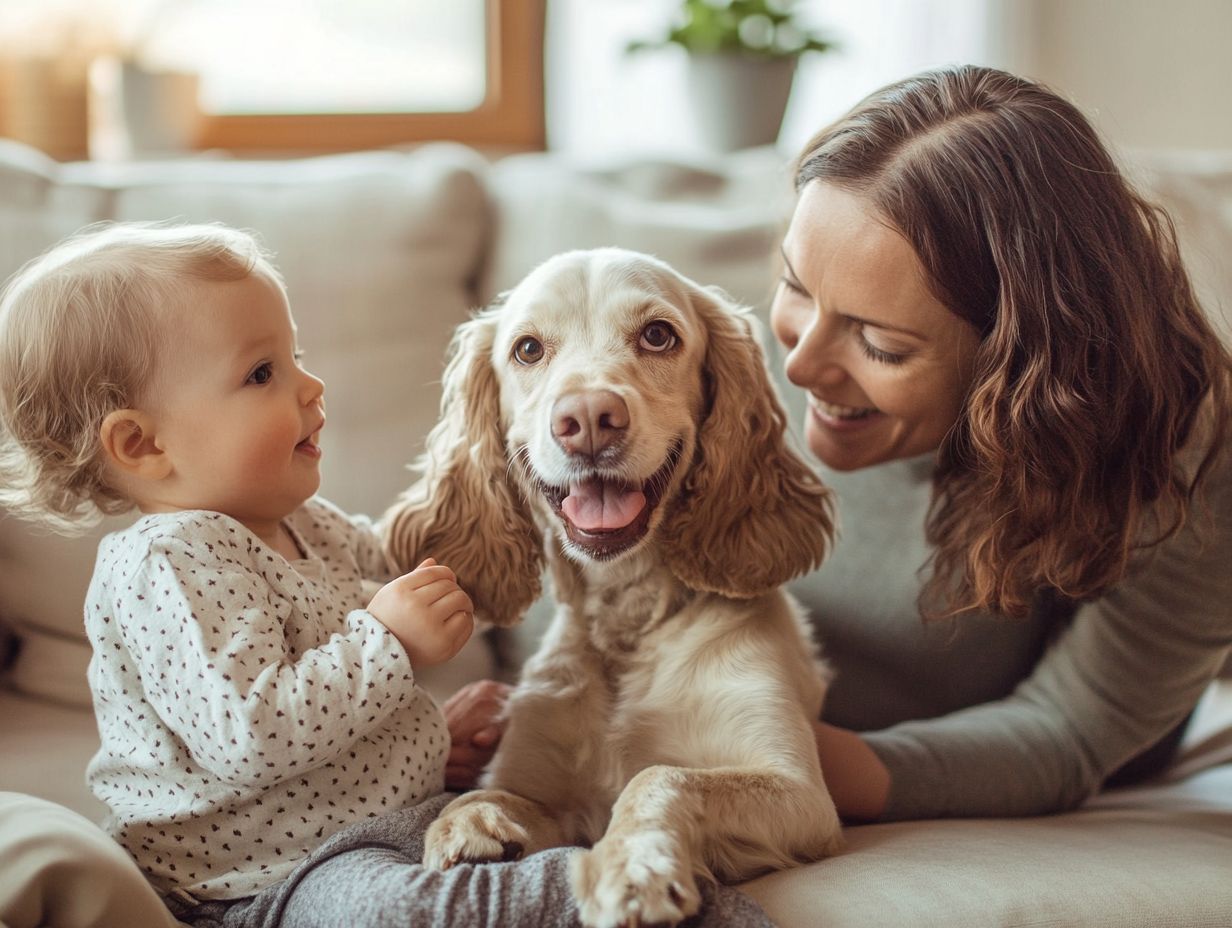
- Common behavioral changes in dogs often arise from stress, anxiety, or shifts in their environment.
- With the right approach, you can effectively address these issues.
- It’s crucial for you, as a pet owner, to recognize the signs of these disruptions.
- These might manifest as excessive barking, destructive chewing, or fluctuations in their appetite.
- Enrolling your dog in training classes can help your dog handle stress better.
Techniques like desensitization (helping your dog get used to things that scare them) and socialization (introducing them to new experiences) can be particularly beneficial. Establishing a routine and creating a safe space can greatly alleviate anxiety.
With patience and positive reinforcement, you can achieve noticeable improvements in their behavior.
Seeking Professional Help
Seeking professional help can be a crucial step in addressing persistent behavioral issues. These issues demand specialized knowledge and effective training techniques.
Engaging with an expert ensures that your furry companion receives the tailored support needed to thrive. Determining when to consult a veterinarian or an animal behaviorist is crucial for effectively addressing your pet’s issues.
As a pet owner, you should remain vigilant for signs that indicate the need for professional intervention. Sudden changes in behavior such as increased aggression, withdrawal, or an unusual decline in energy can signal underlying issues.
Pay attention to poor eating habits or noticeable weight fluctuations. These may point to potential health problems.
Engaging in behavioral assessments can yield valuable insights. Training options tailored by certified professionals can foster healthier interactions and enhance your companion’s well-being.
Act quickly if you spot these signs to ensure your furry friend gets the help they need!
Frequently Asked Questions
Have more questions? Reach out to a professional today!
What are some ways to help my pet adjust to new family members, including a new dog or senior dog?
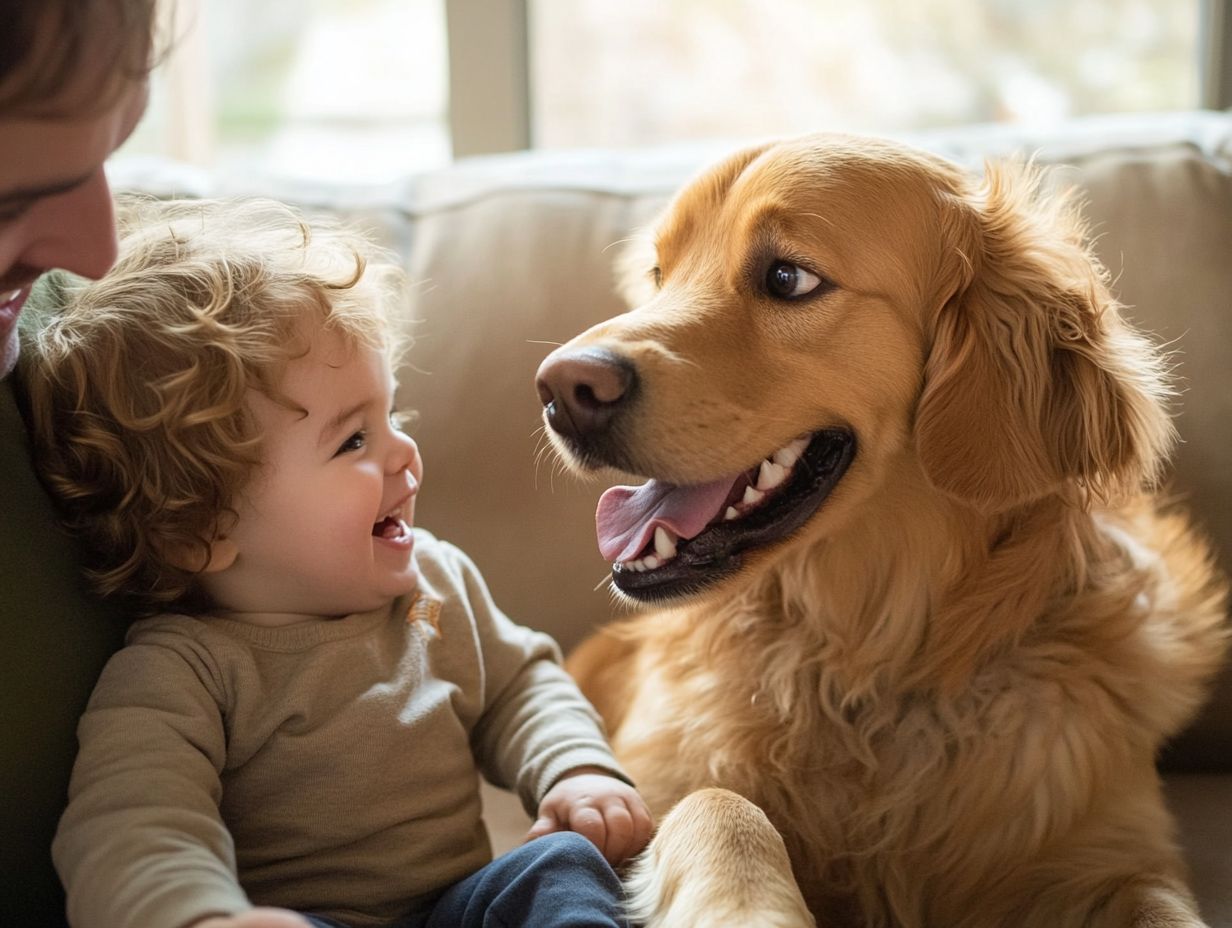
Some ways to help your pet adjust to new family members include gradually introducing them and giving your pet extra attention and love. Additionally, helping your pet adjust involves providing a safe and comfortable space for them to retreat to.
Should I be worried if my pet seems distant or uninterested in the new family member, especially if it s a new dog?
It is normal for pets to take some time to adjust to new family members. If the behavior persists, you might consider checking out what to do if your pet is anxious after moving or consult with a veterinarian or animal behaviorist for assistance.
Can I involve my pet in the arrival of a new family member?
Yes! Involving your pet can help them feel included. You can have your pet greet the new family member or give them a special toy or treat during introductions.
How can I prevent my pet from feeling jealous or neglected with the addition of a new family member, like a puppy or another dog?
To prevent feelings of jealousy or neglect, continue giving your pet love and attention. Maintaining their daily routine and involving them in activities with the new family member can help. It’s also important to learn how to transition pets to new environments smoothly.
What should I do if my pet shows signs of aggression towards the new family member, especially if it s a new dog?
Don’t wait! Tackle any signs of aggression right away to keep everyone safe. Enroll in a training class or visit a dog park to help your dog get used to new friends.
If needed, a veterinarian can offer guidance on how to help an anxious pet adjust to new environments. Additionally, monitor your pet’s interactions to promote positive behavior.
Consider preparing dog supplies, such as a crate, harness, and food bowl, for house-training during the adjustment period. Plan ahead by establishing a routine that includes exercise and training.
Is there anything I should avoid when helping my pet adjust to new family members during the introduction period?
Avoid forcing interactions between your pet and the new family member. Do not punish your pet for showing discomfort or aggression, as this can cause added stress.
Neglecting your pet’s needs and routines can lead to issues like separation anxiety if not addressed with patience.



